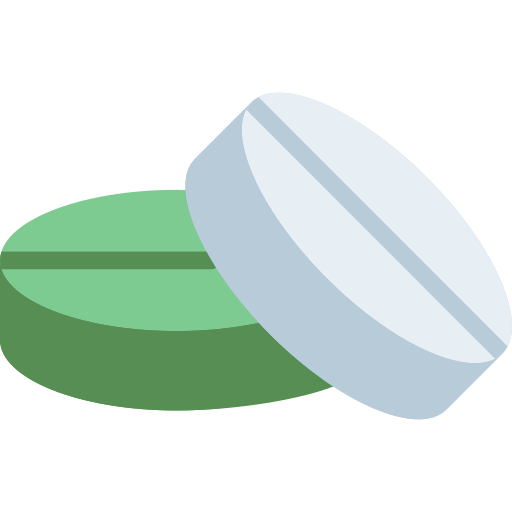
Sacubitril + Valsartan
24 mg+26 mg
Beximco Pharmaceuticals Ltd.
Product Details
Description
This is indicated: To reduce the risk of cardiovascular death and hospitalization for heart failure in patients with chronic heart failure (NYHA Class ll-IV) and reduced ejection fraction. For the treatment of symptomatic heart failure with systemic left ventricular systolic dysfunction in pediatric patients aged one year and older. This is usually administered in conjunction with other heart failure therapies, in place of an angiotensin-converting enzyme inhibitor (ACEi) or other ARB.
Dual Blockade of the Renin-Angiotensin-Aldosterone System: Should not be used with an ACEi, aliskiren in patients with diabetes, and use with an ARB should be avoided. Potassium-sparing Diuretics: Serum potassium level may be increased. NSAIDs: Risk of renal impairment may be increased. Lithium: Increased risk of lithium toxicity.
The most common side effects are Angioedema, Hypotension, Impaired Renal Function, Hyperkalemia, Cough, Dizziness.
Pediatric Use: Safety and effectiveness have not been established in pediatric patients less than 1 year of age. Geriatric Use: No relevant pharmacokinetic differences have been observed in elderly (>65 years) or very elderly (>75 years) patients compared to the overall population. Hepatic Impairment: No dose adjustment is required when administering this tablet to patients with mild hepatic impairment (Child-Pugh A classification). This tablet is not recommended in patients with severe hepatic impairment, as no studies have been conducted in these patients. Renal Impairment: No dose adjustment is required in patients with mild (eGFR 60 to 90 ml/min/1.73 m2) to moderate (eGFR 30 to 60 ml/min/1.73 m2) renal impairment. The recommended starting dose in patients with severe renal impairment (eGFR <30 ml/min/1.73 m2) is 24/26 mg twice daily.
This tablet may cause angioedema and must not be used in patients with a known history of angioedema related to previous ACEi or ARB therapy and in patients with hereditary angioedema. This tablet lowers blood pressure and may cause symptomatic hypotension. Closely monitor serum creatinine, and down-titrate or interrupt this tablet in patients who develop a clinically significant decrease in renal function. In patients with renal artery stenosis, monitor renal function. Monitor serum potassium periodically and treat appropriately, especially in patients with risk factors for hyperkalemia such as severe renal impairment, diabetes, hypoaldosteronism, or a high potassium diet. Dosage reduction or interruption of this tablet may be required.
Pediatric Use: Safety and effectiveness in pediatric patients have not been established. Geriatric Use: No relevant pharmacokinetic differences have been observed in elderly (≥65 years) or very elderly (≥75 years) patients compared to the overall population Renal Impairment: Severe: A starting dose of 24/26 mg twice-daily is recommended for patients with severe renal impairment (eGFR <30 mL/min/1.73 m²). Double the dose of Sacubitril & Valsartan every 2 to 4 weeks to the target maintenance dose of 97/103 mg twice daily, as tolerated by the patient. Mild or moderate: No starting dose adjustment is needed for mild or moderate renal impairment. Hepatic Impairment: Moderate: A starting dose of 24/26 mg twice-daily is recommended for patients with moderate hepatic impairment (Child-Pugh B classification). Double the dose of Sacubitril & Valsartan every 2 to 4 weeks to the target maintenance dose of 97/103 mg twice daily, as tolerated by the patient. Mild: No starting dose adjustment is needed for mild hepatic impairment. Severe: Use in patients with severe hepatic impairment is not recommended.
Limited data are available with regard to overdosage in human subjects with this tablet. In healthy volunteers, a single dose of this tablet 583 mg sacubitril/617 mg valsartan, and multiple doses of 437 mg sacubitril/463 mg valsartan (14 days) have been studied and were well tolerated. Hypotension is the most likely result of overdosage due to the blood-pressure-lowering effects of this tablet. Symptomatic treatment should be provided. This tablet is unlikely to be removed by hemodialysis because of high protein binding.
Keep in a dry place and store below 30°C. Protect from moisture and keep out of the reach of children.
-
Support 24/7
Call us anytime -
100% Safety
Only secure payments